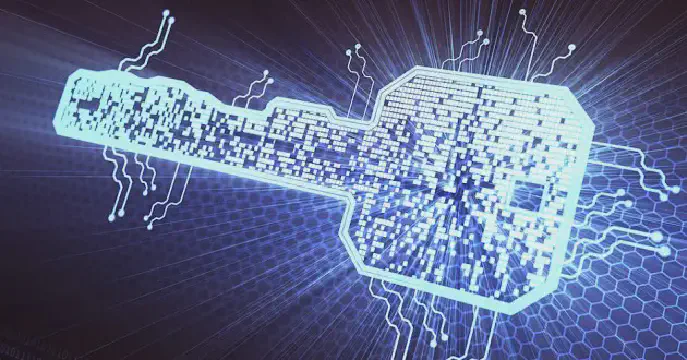Excerpt§
Perfect hashing refers to a hashing technique where keys map to unique slots in the hash table. It eliminates collisions and provides optimal efficiency for lookups.
Hashing is an essential technique used in many areas of computer science and programming. It provides a fast way to insert, search, and delete elements in data structures like hash tables. However, traditional hashing runs into issues like collisions which impact performance. Perfect hashing is an optimized hashing technique that eliminates collisions and provides optimal efficiency.
Introduction to Hashing§
Hashing involves using a hash function to map data of arbitrary size to fixed-size values called hash codes. These hash codes serve as indexes for storing and retrieving data from a hash table.
Some key properties of hash functions:
- They generate unique hash codes for each input.
- A small change in the input drastically changes the hash code.
Hashing enables fast insert, search, and delete in O(1) time on average. However, no hash function can map all possible inputs to unique codes. Two or more keys may produce the same hash code leading to collisions. This requires collision resolution techniques like chaining or open addressing which have limitations.
Perfect hashing offers a solution by ensuring no collisions occur during hashing.
Challenges with Traditional Hashing§
Collisions occur when two different keys hash to the same slot in a hash table. This leads to inefficiencies like:
- Increased lookup time as multiple elements may be mapped to the same slot.
- Wastage of memory slots which remain empty due to clustering of elements.
- Complex collision resolution techniques need to be implemented.
Additionally, the performance of hashing depends on:
- Efficiency of the hash function.
- Load factor of the hash table.
- Quality of collision resolution scheme used.
These parameters require careful tuning and design for optimal performance.
What is Perfect Hashing?§
Perfect hashing refers to a hashing technique where each key in a given set is guaranteed to hash to a unique slot in the hash table. There are no collisions by design.
Key Properties:
- Hash table size equals number of keys to be hashed.
- Hash function assigns each key to a unique slot.
- Insert, search, and delete are O(1) operations.
Perfect hashing requires the set of keys to be static or known in advance before deployment. It does not handle dynamic inserts and deletes efficiently.
How Perfect Hashing Works§
Perfect hashing is done in two phases:
1. Data Preprocessing§
An initial hash table of size m is chosen where m >= n and n is number of keys.
A hash function h1(k) maps keys to slots in this table. Collisions are handled by chaining.
The (key, slot) pairs from h1(k) are used to construct a second hash table t2 of size n.
2. Assignment of Hash Function§
A second hash function h2(k) is chosen by analyzing t2 to ensure no collisions.
This h2(k) serves as the perfect hash function for the given set of keys.
Benefits of Perfect Hashing§
- No collisions - Keys map to unique slots always.
- Optimal memory usage - Hash table size equals number of keys.
- Fast lookups - O(1) access on average with no clustering.
- Simpler code - No collision resolution logic needed.
This results in greatly improved performance in applications like databases, compilers, caches etc.
Use Cases of Perfect Hashing§
Some examples where perfect hashing provides optimization benefits:
- Database indexing - Unique indexes for faster queries and joins.
- Compilers - Efficient symbol tables for identifiers.
- Caching - Predictable access times for in-memory caches.
- Network routing - Rapid lookups for packet forwarding.
- Bioinformatics - Unique representation of genome sequences.
Perfect hashing enables optimal utilization of resources like memory, storage, and processing in these domains.
Implementing Perfect Hashing§
There are different algorithms to construct perfect hash functions systematically.
Some popular techniques are:
1. Botelho, Pagh and Ziviani Method§
This method uses two levels of hashing with randomization for efficient construction of the perfect hash function.
1# Key set
2keys = ["apple", "mango", "guava", "banana"]
3
4# Level 1 hash table
5t1 = dict()
6for key in keys:
7 t1[key] = hash1(key) % 8
8
9# Level 2 hash table
10t2 = dict()
11for key, slot in t1.items():
12 t2[key] = hash2(key, slot) % len(keys)
13
14# Perfect hash function
15def perfectHash(key):
16 return t2[key]
python2. Czech, Havas and Majewski Algorithm§
This algorithm uses recursive hash chaining along with randomization to reduce collisions systematically.
3. Perfect Spatial Hashing§
It uses multiple hash functions based on integer coordinates to map keys to unique hash codes. Widely used in computer graphics.
There are many other methods available as well like b-bit minwise hashing, perfect hashing via botany, and recursive splitting.
Limitations of Perfect Hashing§
- Keys need to be known beforehand. Dynamic inserts/deletes require rehashing.
- Significant memory overhead for storing multiple hash tables.
- Complex construction algorithms require careful implementation.
- Not efficient when keys are ordered sequentially.
Perfect hashing provides significant gains for read heavy workflows. However, it may not be suitable for rapidly changing key sets.
Conclusion§
Perfect hashing provides a collision-free hashing solution by carefully assigning hash functions using the key set. It eliminates drawbacks like clustering and improves the performance of data structures like hash tables. Perfect hashing serves as a useful optimization technique in domains like databases, networks, and compilers. However, it also comes with memory and implementation costs. Overall, perfect hashing is a versatile tool that enables efficient design of hash-based systems and data retrieval workflows.















